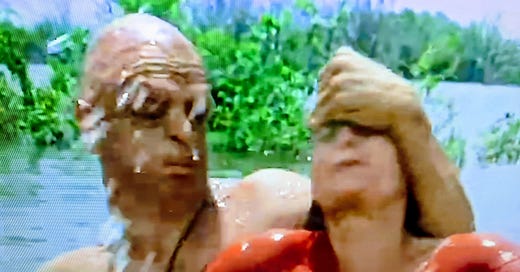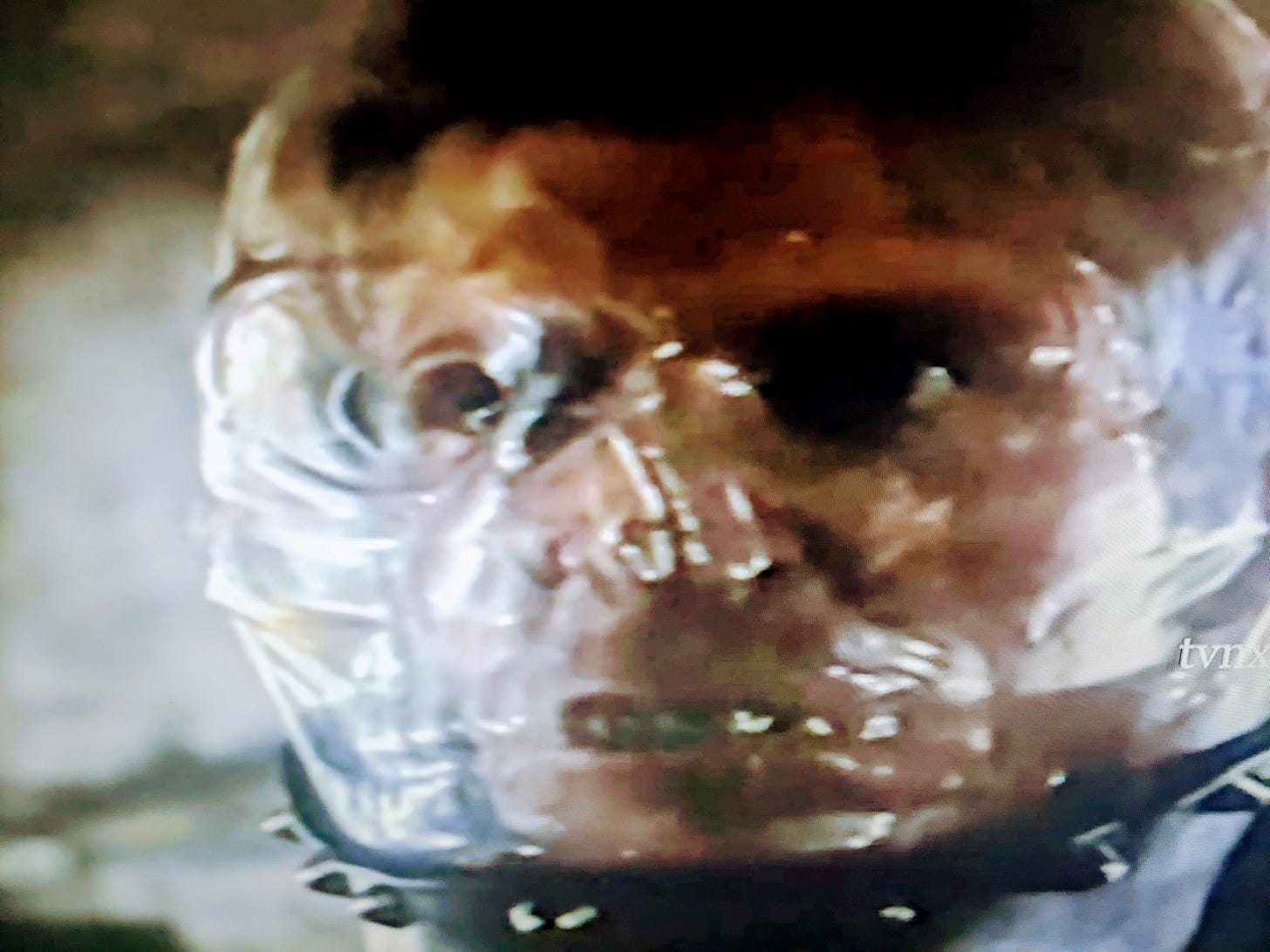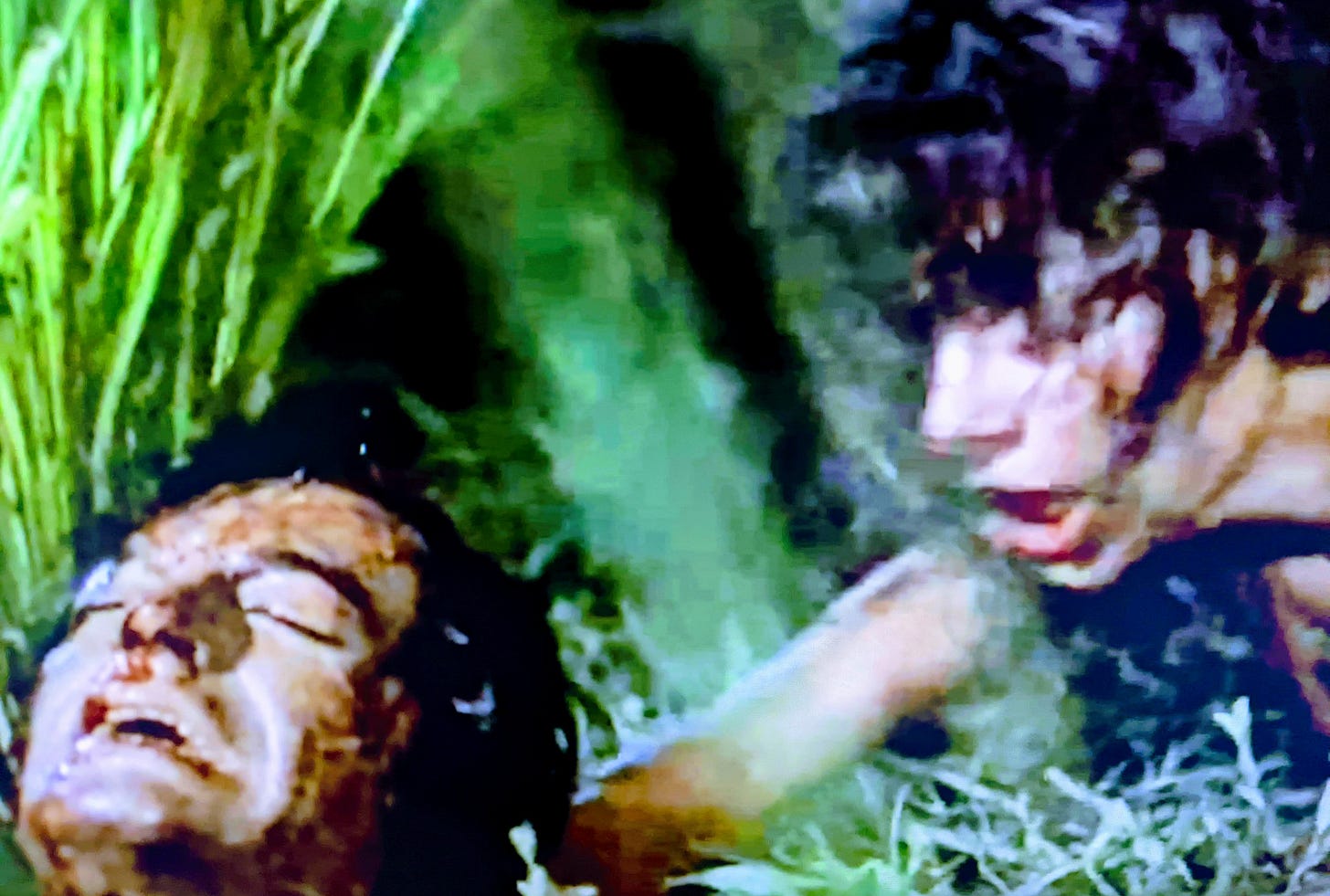Cannibal Fun-ocaust: Ruggero Deodato, Man Of Action!
Thrilling adventure from beyond the green inferno courtesy of Italian shlock cinema's most controversial auteur
Italian director Ruggero Deodato’s death at the end of last year was notable for the muted quality of the praise for his work that followed. This will have something to do with how little known his filmography is outside of cult movie circles, but is also due to the waxing and waning reputation of his most famous film, 1980’s Cannibal Holocaust, which, 40 years after its original release, can still fly the flag of the most notorious horror movie ever made.
While Cannibal Holocaust’s infamy is assured, it’s standing with audiences is in constant flux due to its depictions of unsimulated animal murder and its controversial filming conditions, which have been reliably and justifiably fuelling debate for as long as the film has been available (or not). Everyone has an opinion on Cannibal Holocaust, whether they’ve seen it or otherwise, and this lasting power lies in precisely its ability to stir up conflicting emotions in those who chose to engage. Does the complicated nature of a piece of work justify the unethical conditions in which it was made? Should some pieces of art be allowed to rot in obscurity following revelations about their creation? Can any piece of art justify the taking of a life, no matter how seemingly ‘insignificant’? Yes, no, maybe, probably not, I don’t know, and on and on and on. Cannibal Holocaust’s awkward nature and somewhat disingenuous claims to satire have kept it a reliable talking point in cinema circles for nearly half a century, and understandably most of the obituaries of its 83-year-old director focussed on the controversy.
But, as is typical of Italian film makers of his era, Deodato’s filmography is a large and confounding one, containing entries in genres as far afield as the erotic thriller, sword and sorcery, post-apocalyptic sci-fi and the buddy cop movie. He often expressed frustration that his reputation was hitched to only one film in an imposing filmography, and it’s an understandable peeve given that, at his best, Deodato was a skilled, idiosyncratic filmmaker, with an admirable stylistic flair that features throughout his work. Some of his movies are pure adrenalin fuelled fun, and some sit in a strange area between low-brow pulp thrills and the more knotty and controversial impact of his best-known film.
Raiders of Atlantis (AKA I Predatori Di Atlantide, AKA Atlantis Interceptors) from 1983, fits into the first bracket. One of the most profligate genre mashups of its era, blending aspects of Rambo-style action, Indiana Jones’ pulp adventure, sweaty jungle flick and post-apocalyptic petrol-head gear porn, Raiders of Atlantis is what would happen if an ‘80s side-scrolling shoot-’em-up – think Konami’s Green Beret or Gryzor – had a cheese dream and set fire to its own house.
A group of scientists raise a sunken Russian submarine and inadvertently trigger the reappearance of Atlantis! All while drinking hot coffee from dangerously thin plastic cups! Meanwhile the population of a nearby Caribbean Island are being massacred by the extras from that ‘punk’ episode of ‘Quincy’! The link between these events is not going to be satisfactorily explained! Thankfully a couple of ‘Nam-vet-turned-mercenaries are close at hand to sweat at the problem until it isn’t a problem anymore and, together with a team that I’m obligated to call ‘rag-tag’, turn the tide back against the aquatic invaders.
One of the main strengths of Raiders… is its cast. Cement-hewn jaw-of-action Mike Ross is played by Christopher Connelly, who worked with Lucio Fulci on his Exorcist-alike Manhattan Baby and would go on to find serious form in this kind of testosterone bullet-hell fare, appearing in Bruno Mattei’s magnificently thick-headed Strike Commando three years later. His buddy Washington (or ‘Mohammed’ as he insists on being called, having recently converted to Islam in an aside that has no impact on the plot whatsoever) is portrayed by Tony King, who’d appeared in Shaft and a string of blaxploitation classics, before notably turning up in Antonio Margheriti’s Cannibal Apocalypse. The two have a relaxed, groovy chemistry and are clearly having a fantastic time firing guns in the jungle and dropping petrol bombs on catapulting stuntmen. The rest of the cast is made up of the kind of genre mainstays that fans of this type of nonsense love spotting in their natural environment, such as George Hilton, Ivan Rassimov and, oh look, it’s Michele Soavi! That guy gets everywhere…
But the heartbeat of Raiders of Atlantis is wall-to-wall action. The movie rolls along like a video game, with our heroes progressing from exotic setting to exotic setting, dropping dudes as they go and finding time for a kidnap side game and a moving vehicle level along the way. They go from sopping wet and under resourced to bristling with guns in no time whatsoever (“The local cops sure had a lot of good weapons!”) and Connelly even has time for some romance with a sexy scientist played by Gioia Scola, leading to the following exchange:
Him: “All sailors are guys like Popeye, huh? All we do is eat spinach?”
Her: “I like spinach, too.”
Him: “Well, I tell you what, as soon as we get back, I’ll take you out to a spinach dinner.”
The eroticism is palpable.
Films like Raiders of Atlantis live or die on the quality of their wallpaper and the speed at which they put it up, and Deodato is smart enough to keep piling the layers on. The routes out of abandoned hotels lead to death trap strewn jungles, pursuing helicopters and eventually fabled Atlantis itself. The antagonists are an endless parade of leopard-print festooned and bondage trousered street punks, led by a crystal skull wearing former accountant who constantly slaps his palm with a big stick. People are set on fire, chucked off cliffs, thrown into walls, shot at by lasers and unconvincingly menaced by giant metal fans. Anything to stop the viewer asking questions until the credits roll. Thankfully Raiders… failures in that regard, coming mainly from an incoherent backstory, are more charming than distracting, and the film swings past, high on goofy primate energy. It’s also one of Deodato’s less sadistically violent efforts. There’s a beheading and some blood, but for the most part this updated inversion of the Doug McClure ‘Lost World’ pics of the ‘70s is content to remain a comparatively family friendly piece of adventure pulp.
Deodato’s relationship to the sort of ‘Boy’s Own’ adventure fare mirrored and, to an extent, parodied by Raiders of Atlantis is a thread through many of his films - yet another layer is added to Cannibal Holocaust’s implacable aura when it’s viewed through the lens of the colonialist adventure literature created by writers like Conan Doyle - and another of Deodato’s later films goes further in making the connection explicit.
1984’s Cut and Run (AKA Inferno in Diretta) is that film, as well as the answer to what would happen if a focus group demanded Deodato direct a slightly more ‘fun’ version of his controversial magnum opus.
In terms of plot Cut and Run sticks close to the ‘Green Inferno’ adventure template. Two reporters are lured into the Amazonian jungle by footage of a green beret survivor of the Jonestown massacre and get caught up in a drug war, a kidnapping scheme, and a mysterious local cult. It’s Willard Price meets Mondo Cane, and it’s all a bit over complicated.
It's also considerably nastier and more cynical than Raiders of Atlantis. This ‘Cannibal Fun-ocaust’ starts with rape and impalement, and progresses through beheadings, executions, more rape, and, in a memorable scene, a man with his legs tied between two trees getting opened up like a butterfly knife. It also embarrassingly depicts its Amazonian native characters as spiky props to be spooked into submission by machine gun fire or terrorised by superstition. At times its sordid nature threatens to sink the whole enterprise face-down into the mud, but the movie sticks it out through its unstoppable momentum, likeable characters, and an atmosphere the weaves between exhilarating and sickening like a bent ceiling fan.
Cut and Run also contains more examples of Deodato’s distinct directing style than Raiders of Atlantis, and the saturated, drizzly gloom that haunts his best work is often in evidence. Stylistically Deodato’s closest American contemporary would probably be Tobe Hooper. Though he lacks Hooper’s stoner theatricality, he is similarly drawn toward gruesome tableau and bitterly black humour, as well as an overarching distrust of authority and a taste for the kind of lurid violence that only a committed non-combatant could dream up.
Linking the unfolding events to the massacre at Jonestown is a typically tasteless ploy, especially as Deodato uses real footage from the People’s Temple intercut with footage of his actors to give a sense of verité to proceedings, explicitly linking Cut and Run to Cannibal Holocaust’s savage media satire in the process. As with that previous film, it’s a hard mix to digest, made even more bewildering in the context of the shaggy adventure narrative surrounding it, but it leads to the final third, in which we realise the director’s intention all along: Ruggero Deodato has decided to present the viewer with his very own Apocalypse Now.
And if you’ve got to get yourself a budget Colonel Kurtz in a hurry, you could do a lot worse than Richard “Cromwell of Aragon” Lynch, whose performance as the lost-downriver Colonel Horne reaches its peak as he sits in a hammock whispering to a snake about “Oriental philosophy”. This Conrad-via-Coppola homage takes Cut and Run back to its colonialist adventure roots, as do the daring, last-minute helicopter rescue and final bloody sacrifice. It’s a thrilling, icky and exhausting film, and there’s not much out there like it. But it and Raiders of Atlantis are both exhilaratingly messy and exciting, and their director deserves a more representative reputation, if perhaps not a less controversial one.









